
Jesus healing the bleeding woman (or "woman with an issue of blood" and other variants) is one of the miracles of Jesus recorded in the synoptic gospels. [1] [2]

Jesus healing the bleeding woman (or "woman with an issue of blood" and other variants) is one of the miracles of Jesus recorded in the synoptic gospels. [1] [2]
In the Gospel accounts, this miracle immediately follows the exorcism at Gerasa and is combined with the miracle of the raising of Jairus's daughter. The narrative interrupts the story of Jairus's daughter, a stylistic element which scholars call an intercalated or sandwich narrative. [3] [4]
There are several differences between the accounts given by Mark, Matthew and Luke.
The incident occurred while Jesus was traveling to Jairus's house, amid a large crowd, according to Mark:
And a woman was there who had been subject to bleeding for twelve years. She had suffered a great deal under the care of many doctors and had spent all she had, yet instead of getting better she grew worse. When she heard about Jesus, she came up behind him in the crowd and touched his cloak, because she thought, "If I just touch his clothes, I will be healed." Immediately her bleeding stopped and she felt in her body that she was freed from her suffering. At once Jesus realized that power had gone out from him. He turned around in the crowd and asked, "Who touched my clothes?" "You see the people crowding against you," his disciples answered, "and yet you can ask, 'Who touched me?'" But Jesus kept looking around to see who had done it. Then the woman, knowing what had happened to her, came and fell at his feet and, trembling with fear, told him the whole truth. He said to her, "Daughter, your faith has healed you. Go in peace and be freed from your suffering.
The woman's condition, which is not clear in terms of a modern medical diagnosis, is translated as an 'issue of blood' in the King James Version and a 'flux of blood' in the Wycliffe Bible and some other versions. In scholarly language she is often referred to by the original New Testament Greek term as the haemorrhoissa (ἡ αἱμοῤῥοοῦσα, 'bleeding woman'). The text describes her as gynē haimorroousa dōdeka etē (γυνὴ αἱμορροοῦσα δώδεκα ἔτη), with haimorroousa being a verb in the active voice present participle ("having had a flow [rhēon], of blood [haima]"). Some scholars view it as menorrhagia; others as haemorrhoids. [6]
Because of the continual bleeding, the woman would have been continually regarded in Jewish law as a niddah or menstruating woman, and so ceremonially unclean. In order to be regarded as clean, the flow of blood would need to stop for at least 7 days. Because of the constant bleeding, this woman lived in a continual state of uncleanness which would have brought upon her social and religious isolation. [7] It would have prevented her from getting married – or, if she was already married when the bleeding started, would have prevented her from having sexual relations with her husband and might have been cited by him as grounds for divorce.
Matthew's and Luke's accounts specify the "fringe" of his cloak, using a Greek word which also appears in Mark 6. [8] According to the Catholic Encyclopedia article on fringes in Scripture, the Pharisees (one of the sects of Second Temple Judaism) who were the progenitors of modern Rabbinic Judaism, were in the habit of wearing extra-long fringes or tassels (Matthew 23:5), [9] a reference to the formative ritual fringes ( tzitzit ). Because of the Pharisees' authority, people regarded the fringe as having a mystical quality. [10]
Matthew's version is much more concise, and shows notable differences and even discrepancies compared to the Markan and Lukan accounts. Matthew does not say the woman failed to find anyone who could heal her (as Luke and Mark do), let alone that she spent all her savings paying physicians but the affliction had only grown worse (as Mark does). There is no crowd in Matthew's account; Jesus immediately notices that the woman touched him instead of having to ask and look amongst the crowd who touched him. Neither is the woman trembling in fear and telling him why she did it. Jesus is not said to feel a loss of power according to Matthew; the woman is only healed after Jesus talks to her, not immediately upon touching his cloak. [11]
Cornelius a Lapide comments on why the woman, after being healed was fearful of Jesus, writing that she had "approached secretly, and, unclean," touching Christ who was clean, and so had, "stolen a gift of healing from Christ without His knowledge." Thus it appears she was concerned that Christ might rebuke her, and potentially recall the benefit, or punish her with a worse disease. From this Lapide concludes "that she had not perfect faith." [12]
Venerable Bede wrote that Christ asked the question, "Who touched My garments?" so that the healing which he had given her, being declared and made known, "might advance in many the virtue of faith, and bring them to believe in Christ."[ citation needed ]
Given that the woman was cured when she touched the hem of the garment, John McEvilly writes in his Gospel commentary, supports the doctrine of the efficacy of relics , that is, that physical objects can have divine power in them. The same being clear from the miracles produced from contact with the bones of Elisha (2 Kings 13:21), [13] as well as the shadow of Peter curing diseases (Acts 5:15). [14] [15]

Eusebius, writing in the reign of Constantine I, says he himself saw a pair of statues in bronze in Panease or Caesarea Philippi (on the Golan Heights in modern terms) of Jesus and the haemorrhoissa, sculpture being at this time an unusual form for the depiction of Jesus. By his description they resembled a sculptural version of the couple as they were shown in a number of paintings in the Catacombs of Rome. He sees this in terms of ancient traditions of commemorating local notables rather than newer ones of Early Christian art. The statues were placed outside the house of the woman, who came from the city, and was called Veronica (meaning 'true image'), according to the apocrypha Acts of Pilate and later tradition, which gave other details of her life. [16]
When Julian the Apostate became emperor in 361 he instigated a programme to restore Hellenic paganism as the state religion. [17] In Panease this resulted in the replacement of the statue of Christ, with results described by Sozomen, writing in the 440s:
Having heard that at Caesarea Philippi, otherwise called Panease Paneades, a city of Phoenicia, there was a celebrated statue of Christ, which had been erected by a woman whom the Lord had cured of a flow of blood. Julian commanded it to be taken down, and a statue of himself erected in its place; but a violent fire from the heaven fell upon it, and broke off the parts contiguous to the breast; the head and neck were thrown prostrate, and it was transfixed to the ground with the face downwards at the point where the fracture of the bust was; and it has stood in that fashion from that day until now, full of the rust of the lightning.
However, it has been pointed out since the 19th century that the statues were probably a misunderstanding or distortion of a sculptural group in fact originally representing the submission of Judea to the Emperor Hadrian. Images of this particular coupling, typical of Roman Imperial adventus imagery, appear on a number of Hadrian's coins, after the suppression of the Bar Kokhba revolt of 132–136. The statues seem to have been buried in a landslide and some time later rediscovered and interpreted as Christian. Since Caesarea Philippi had been celebrated for its temple of the god Pan, a Christian tourist attraction was no doubt welcome news for the city's economy. [18] [lower-alpha 1]
Representations of the episode which seem clearly to draw on the lost statue, and so resemble surviving coins of the imperial image, appear rather frequently in Early Christian art, with several in the Catacombs of Rome, as illustrated above, on the Brescia Casket and Early Christian sarcophagi, and in mosaic cycles of the Life of Christ such as San Apollinare Nuovo in Ravenna. It continued to be depicted sometimes until the Gothic period, and then after the Renaissance. [19]
The story was later elaborated in the 11th century in the West by adding that Christ gave her a portrait of himself on a cloth, with which she later cured Tiberius. This Western rival to the Image of Edessa or Mandylion eventually turned into the major Western icon of the Veil of Veronica, now with a different story for "Veronica". The linking of this image with the bearing of the cross in the Passion, and the miraculous appearance of the image was made by Roger d'Argenteuil's Bible in French in the 13th century, [20] and gained further popularity following the internationally popular work, Meditations on the Life of Christ of about 1300 by a Pseudo-Bonaventuran author. It is also at this point that other depictions of the image change to include a crown of thorns, blood, and the expression of a man in pain, [20] and the image became very common throughout Catholic Europe, forming part of the Arma Christi, and with the meeting of Jesus and Veronica becoming one of the Stations of the Cross.

Saint Veronica, also known as Berenike, was a widow from Jerusalem who lived in the 1st century AD, according to extra-biblical Christian sacred tradition. A celebrated saint in many pious Christian countries, the 17th-century Acta Sanctorum published by the Bollandists listed her feast under July 12, but the German Jesuit scholar Joseph Braun cited her commemoration in Festi Marianni on 13 January.

The miracles of Jesus are miraculous deeds attributed to Jesus in Christian and Islamic texts. The majority are faith healings, exorcisms, resurrections, and control over nature.

The raising of the son of the widow of Nain is an account of a miracle by Jesus, recorded in the Gospel of Luke chapter 7. Jesus arrived at the village of Nain during the burial ceremony of the son of a widow, and raised the young man from the dead.

Mark 5 is the fifth chapter of the Gospel of Mark in the New Testament of the Christian Bible. Taken with the calming of the sea in Mark 4:35–41, there are "four striking works [which] follow each other without a break": an exorcism, a healing, and the raising of Jairus' daughter.
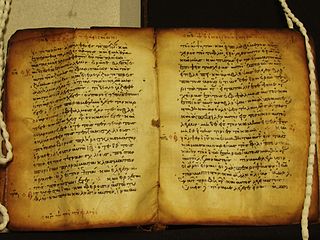
Mark 8 is the eighth chapter of the Gospel of Mark in the New Testament of the Christian Bible. It contains two miracles of Jesus, Peter's confession that he believes Jesus is the Messiah, and Jesus' first prediction of his own death and resurrection. It is the middle chapter of the gospel but its significance is variously understood: for example the Jamieson-Fausset-Brown Bible Commentary calls it a "section of miscellaneous matter", whereas many commentators treat it as a turning point where Mark's description of Jesus as teacher and miracle worker gives way to his focus on the role of Jesus' death and the difficult nature of his teachings.

Matthew 9 is the ninth chapter of the Gospel of Matthew in the New Testament and continues the narrative about Jesus' ministry in Galilee as he ministers to the public, working miracles, and going through all the cities and towns of the area, preaching the gospel, and healing every disease. This chapter opens with Jesus back in "his own town", i.e. Capernaum.

Matthew 17 is the seventeenth chapter in the Gospel of Matthew in the New Testament section of the Christian Bible. Jesus continues his final journey to Jerusalem ministering through Galilee. William Robertson Nicoll identifies "three impressive tableaux" in this chapter: the transfiguration, the epileptic boy and the temple tribute.

Luke 8 is the eighth chapter of the Gospel of Luke in the New Testament of the Christian Bible. The book containing this chapter is anonymous but early Christian tradition uniformly affirmed that Luke the Evangelist, a companion of Paul the Apostle on his missionary journeys, composed both this Gospel and the Acts of the Apostles. This chapter mentions the women who supported Jesus and records some of the great miracles he performed, as well as several parables told by him.
Matthew 9:20 is a verse in the ninth chapter of the Gospel of Matthew in the New Testament.
Matthew 9:22 is a verse in the ninth chapter of the Gospel of Matthew in the New Testament.

Matthew 9:18 is the 18th verse in the ninth chapter of the Gospel of Matthew in the New Testament.
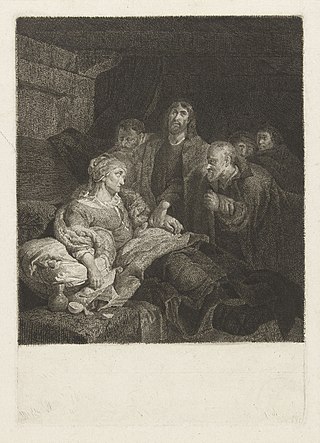
Matthew 8:14 is the fourteenth verse of the eighth chapter of the Gospel of Matthew in the New Testament. This verse describes the start of Jesus healing Peter's mother-in-law.

The raising of Jairus' daughter is a reported miracle of Jesus that occurs in the synoptic Gospels, where it is interwoven with the account of the healing of a bleeding woman. The narratives can be found in Mark 5:21–43, Matthew 9:18–26 and Luke 8:40–56.

The healing of the mother of Peter's wife is one of the miracles of Jesus in the Gospels, reported in Matthew 8:14–15, Mark 1:29–31, and Luke 4:38–39.
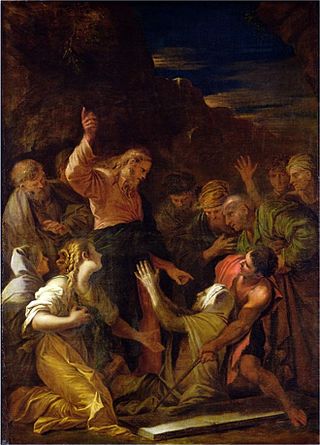
Jesus cleansing a leper is one of the miracles of Jesus. The story is found in all three of the Synoptic Gospels: Matthew 8:1–4, Mark 1:40–45 and Luke 5:12–16.

The exorcism of a boy possessed by a demon, or a boy with a mute spirit, is one of the miracles attributed to Jesus reported in the synoptic Gospels, involving the healing of a demonically possessed boy through exorcism. The account appears first in the Mark 9:17-29 and is repeated, slightly amended, in Matthew 17:14-21 and Luke 9:40-44. In the Gospel narratives, this healing takes place following the Transfiguration.

The Exorcism of the Syrophoenician woman's daughter is one of the miracles of Jesus in the Gospels and is recounted in the Gospel of Mark in chapter 7 and in the Gospel of Matthew in chapter 15. In Matthew, the story is recounted as the healing of a Canaanite woman's daughter. According to both accounts, Jesus exorcised the woman's daughter whilst travelling in the region of Tyre and Sidon, on account of the faith shown by the woman.
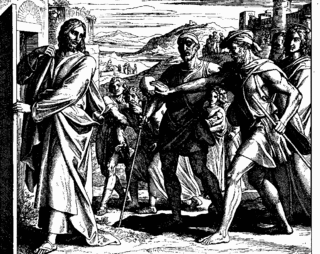
Jesus healing two blind men is a miracle attributed to Jesus in the Gospel of Matthew. It follows immediately on the account of the Daughter of Jairus.
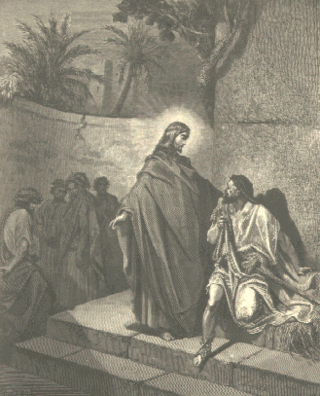
Jesus exorcising a mute is the last of a series of miracles of Jesus recorded in chapter 9 of the Gospel of Matthew. It appears in Matthew 9:32–34, immediately following the account of Christ healing two blind men.
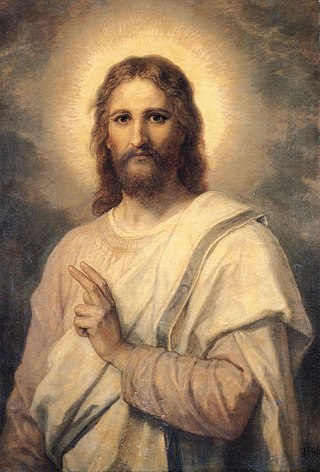
The following outline is provided as an overview of and topical guide to Wikipedia articles on the life and influence of Jesus.